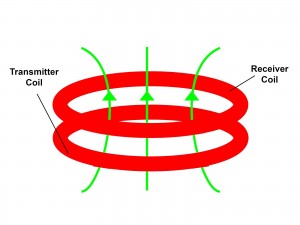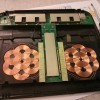How Do Magnetic Wireless Chargers Work?
For people who are always on the go, carrying a phone charger in addition to a cell phone is probably a common practice. The battery life of most cell phones just can’t keep up with real life. But instead of searching for a free outlet at a coffee shop, some power companies created wireless chargers that use magnetic force instead of cords to transfer power.
Two Types of Magnetic Charging
There are two kinds of magnetized wireless charging, resonance and inductive charging. Both types transfer power from the charger to the device through a magnetic field. They transfer electric power between the two objects using coils. The interaction between the transmitter coil, located in the charger, and the receiver coil, located in the device, generates a magnetic field. The difference between these two types is distance.
Resonance chargers don’t require direct contact with the device and they can charge your device as long as it’s within range.So, this means you can attach the charger to the bottom of your desk at work and set your phone on top of the desk to charge. Even though the phone and the charger aren’t touching, your phone will still charge. Inductive charging requires the device and the charger to touch. It seems less convenient, but they tend to have a higher transfer efficiency than resonance chargers. Resonance chargers can increase efficiency with more coils as you can see in the picture above. The diagram below provides a visual for how the coils interact to create a magnetic field.
 The antenna and coils in the charger and phone generate the magnetic field. Ferrite shielding focuses the magnetic field toward the antenna, which is tuned to the same resonance on both devices. The magnetic battery is a combination of materials including Litz wire for the coils, a center-positioned magnet, and a ferrite sheet. The thickness of the ferrite sheet determines the power level of the battery and the type of coil determines the thickness of the magnetic shield.
Magnetic wireless chargers are less expensive and more convenient than wire chargers. Some Starbucks stores have wireless chargers available after Starbucks made a deal a wireless charging company. Not all phones are compatible with the charging pads, however, and require either a special case or another attachment. You can create a battery at home using magnets to better understand how magnetic wireless chargers work. Please contact us with any comments or questions.
Image by Peter
The antenna and coils in the charger and phone generate the magnetic field. Ferrite shielding focuses the magnetic field toward the antenna, which is tuned to the same resonance on both devices. The magnetic battery is a combination of materials including Litz wire for the coils, a center-positioned magnet, and a ferrite sheet. The thickness of the ferrite sheet determines the power level of the battery and the type of coil determines the thickness of the magnetic shield.
Magnetic wireless chargers are less expensive and more convenient than wire chargers. Some Starbucks stores have wireless chargers available after Starbucks made a deal a wireless charging company. Not all phones are compatible with the charging pads, however, and require either a special case or another attachment. You can create a battery at home using magnets to better understand how magnetic wireless chargers work. Please contact us with any comments or questions.
Image by Peter
 The antenna and coils in the charger and phone generate the magnetic field. Ferrite shielding focuses the magnetic field toward the antenna, which is tuned to the same resonance on both devices. The magnetic battery is a combination of materials including Litz wire for the coils, a center-positioned magnet, and a ferrite sheet. The thickness of the ferrite sheet determines the power level of the battery and the type of coil determines the thickness of the magnetic shield.
Magnetic wireless chargers are less expensive and more convenient than wire chargers. Some Starbucks stores have wireless chargers available after Starbucks made a deal a wireless charging company. Not all phones are compatible with the charging pads, however, and require either a special case or another attachment. You can create a battery at home using magnets to better understand how magnetic wireless chargers work. Please contact us with any comments or questions.
Image by Peter
The antenna and coils in the charger and phone generate the magnetic field. Ferrite shielding focuses the magnetic field toward the antenna, which is tuned to the same resonance on both devices. The magnetic battery is a combination of materials including Litz wire for the coils, a center-positioned magnet, and a ferrite sheet. The thickness of the ferrite sheet determines the power level of the battery and the type of coil determines the thickness of the magnetic shield.
Magnetic wireless chargers are less expensive and more convenient than wire chargers. Some Starbucks stores have wireless chargers available after Starbucks made a deal a wireless charging company. Not all phones are compatible with the charging pads, however, and require either a special case or another attachment. You can create a battery at home using magnets to better understand how magnetic wireless chargers work. Please contact us with any comments or questions.
Image by Peter
